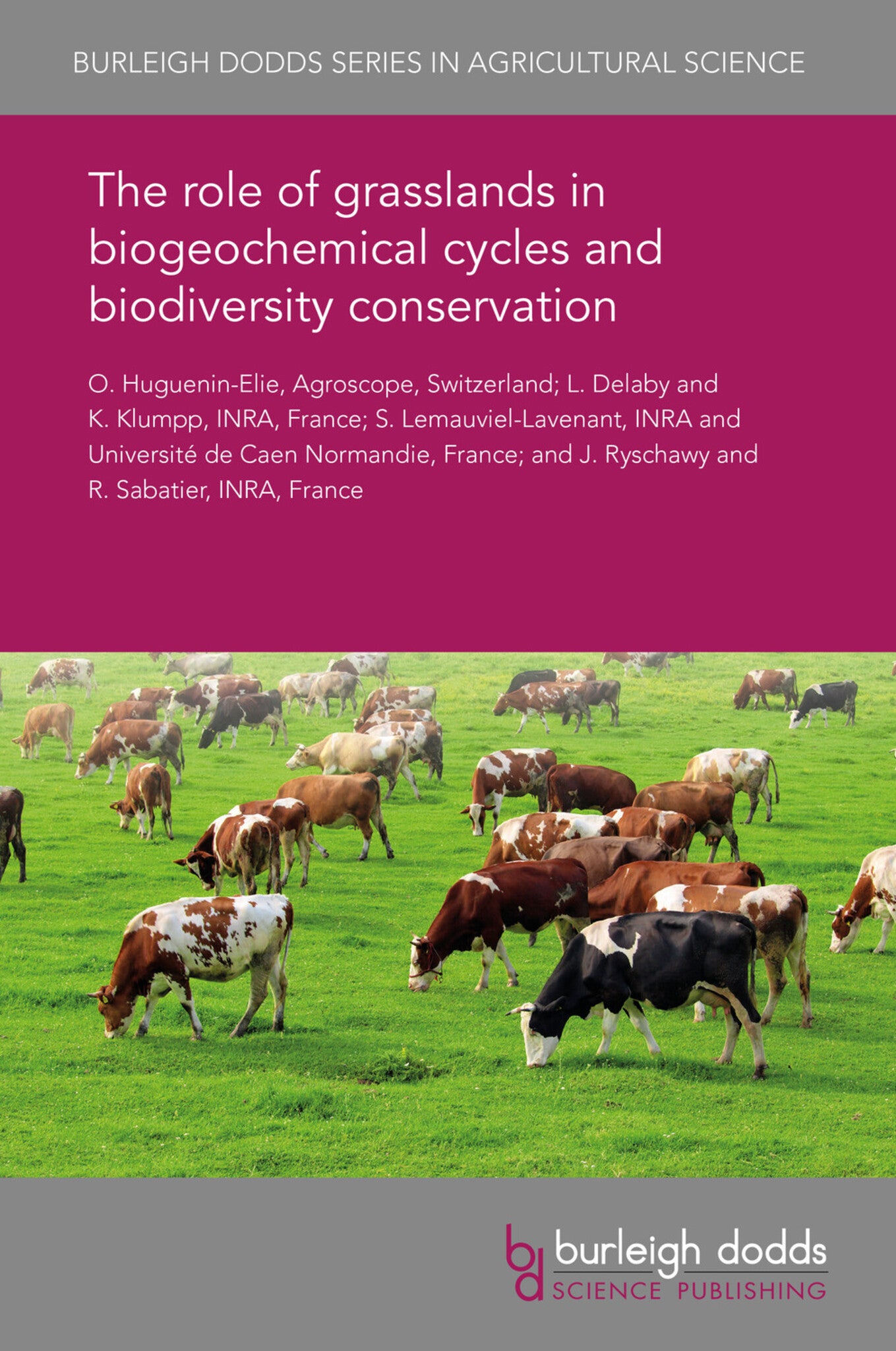We're sorry. An error has occurred
Please cancel or retry.
The role of grasslands in biogeochemical cycles and biodiversity conservation
O. huguenin-elie,
Dr l. delaby,
Dr k. klumpp,
Dr s. lemauviel-lavenant,
Dr j. ryschawy,
View More
Dr r. sabatier
Regular price
£25.00
Sale price
£25.00
Regular price
£25.00
Unit price
/
per
Sale
Sold out
Re-stocking soon
Grasslands have a multifunctional role in producing forage for animal production systems while providing a wide array of ecosystem services, including the regulation of biogeochemical cycles and th...
Read More

Some error occured while loading the Quick View. Please close the Quick View and try reloading the page.
Couldn't load pickup availability
- Format:
-
26 July 2018

Grasslands have a multifunctional role in producing forage for animal production systems while providing a wide array of ecosystem services, including the regulation of biogeochemical cycles and the maintenance of biodiversity which are of utmost importance for agriculture and society as a whole. This chapter provides an overview of current knowledge on the roles of grasslands in regulating the carbon (C) and nitrogen (N) cycles and conserving biodiversity. The chapter describes the ways in which environmental roles of grasslands are driven by nutrient management, frequency and timing of utilization, type of utilization (mowing or grazing), the lifespan of the grasslands and their position and diversity in the landscape. It then explains how different grassland types are necessary to target multiple services because the services of food production, carbon storage in soils, regulation of the N cycle and biodiversity conservation are maximized at different levels of grassland intensification.

Price: £25.00
Publisher: Burleigh Dodds Science Publishing
Imprint: Burleigh Dodds Science Publishing
Series: Burleigh Dodds Series in Agricultural Science
Publication Date:
26 July 2018
ISBN: 9781838796839
Format: eBook
BISACs:
TECHNOLOGY & ENGINEERING / Agriculture / Forestry, Plains and grasslands, TECHNOLOGY & ENGINEERING / Agriculture / Sustainable Agriculture, Sustainable agriculture, Forestry and silviculture

1 Introduction 2 Biogeochemical cycles 3 Grassland biodiversity at the plot scale 4 Grassland roles in biodiversity conservation at the landscape scale 5 Future trends and conclusion 6 References



